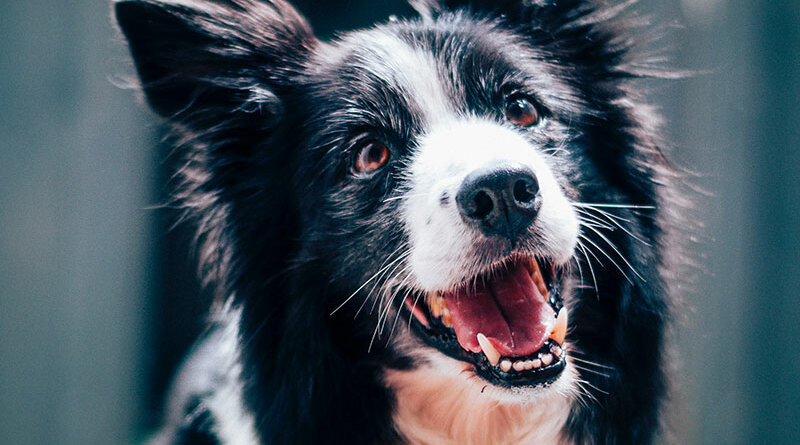Distance Dog Training | The Bark
It makes sense that most of the time, we train our dogs at close range. Our dog is right next to or in front of us when we give the cue to heel, sit, stay, down or wave. Calling our dogs to come is often done from a distance, but that’s not the case for most of the behaviors we ask our dogs to perform.
However, there are benefits to teaching dogs to respond to a variety of cues even if we’re a bit (or even a lot) farther away. If we haven’t done this kind of distance training, our dogs are very unlikely to do what we ask in that situation. Getting a reliable response at a distance requires training at a distance, and lots of it.
A dog whose education has included distance training can be better protected, as being able to communicate with a dog in an emergency situation can be life-saving. The most common example involves a dog who has accidentally gotten loose. A dog running free in such an unplanned manner may be at risk of being hit by a car, of running off and becoming disoriented, or—if it happens in the country during hunting season—of being shot.
If there’s a person alive who’s owned dogs for any substantial amount of time and has never faced some sort of terrifying situation because their dog got loose, I would be amazed. I certainly have, and though I am not proud of it, I’m not ashamed either. Life happens, and so do accidents. Screen doors blow open (or even off) in storms, gates are left off the latch, leashes break and people don’t always check where the dog is before opening the front door.
GET THE BARK NEWSLETTER IN YOUR INBOX!
Sign up and get the answers to your questions.
If a dog gets free but has been trained to come when called and does so without fail, serious hazards can be avoided. But what if the dog has already crossed the road and calling her back would put her at risk again? That’s where being able to ask her from a distance to sit or lie down and then stay can be such a critical skill. Teaching her to do these things when she’s in front of you is one thing, but successful behavior at a distance is a direct result of successful training at a distance.
Even if the danger is not as critical, distance training can still help you keep your dog safe. Suppose you break a glass baking dish and the pieces scatter all over the floor between you and your dog? If you can tell her to sit and stay until you clean up the mess, or send her to her bed to lie down and stay, you’re preventing your dog from being injured. If you happen to be barefoot, it protects you, too; you don’t have navigate the glass to grab her and put her someplace safe.
Sometimes, having your dog respond to you at a distance is more a matter of convenience than of safety. If you’re finger-painting with your (human) kids or up to your elbows at the kitchen sink, being able to tell your dog what to do without interrupting what you’re doing makes life just a little bit easier. In such cases, distance training gives you more flexibility with your own actions, and such options tend to be very helpful.
Specifically training a dog to respond at a distance is necessary because generally, when a dog is asked to do something from halfway across the room, she will trot over to us and then do it. Take “sit,” for example. To most dogs, “sit” means to put their behinds on the ground right in front of whoever asked them to do it. That is a direct result of our training, which almost always involves us giving the cue to sit when our dogs are at our feet. If we want our dogs to sit wherever they are when asked, we have to teach them that this is what we want them to do.
One advantage of distance training is that it helps us communicate more clearly with our dogs as they develop a greater understanding of the cues we give them. Another is that it expands their minds and gives them mental exercise, as we are asking them to make a paradigm shift in their thinking, which is exciting. The end result is a dog whose training is both more specific and more useful in a practical sense. A dog who can respond to cues at a distance is a dog who can safely be given more freedom, which is a way to make their lives even better.
So, having discussed how wonderful it can be to have a dog who responds to your cues even if you’re not right next to her, I’ll now tell you how to get there from here. The secret, as it so often is with dog training, is that you do so gradually and by repeatedly reinforcing the behavior each step of the way.
Take “sit,” for example (or any other behavior, such as “down,” “wave,” “stay” or “spin”). Start with the slightest of increases in distance. Say your dog is about six inches to a foot farther away from you than usual when you ask her to sit. If she sits where she is, reinforce her. After several sessions where she’s successful at this distance, increase the distance by another few inches, or perhaps as much as a foot. Again, if she sits when asked, reinforce her. Only increase the distance when she can consistently succeed at the current distance.
If she comes closer before sitting, there are other things you can try, all of which follow the same strategy: to make the task easier for her so she can succeed. You can decrease the distance between you and/or work in an area that’s less distracting. Or, lean slightly toward her or take a step in her direction as soon as you give her the cue. Moving toward a dog, either with a lean or a step, encourages many dogs to stop any forward motion, and will often result in a response to the cue before you get closer. As soon as she does sit, reinforce her and stop leaning in her direction; leaning toward a dog puts pressure on that dog, and you want to relieve the pressure as soon as it’s no longer needed.
In the early stages of this training, it’s common for people to increase the distance too fast. It’s too big a jump from what your dog knows to 5, 10 or 15 feet away, or all the way across the yard or park. That’s too hard. Start by making success possible for your dog, or better yet, probable, and then gradually (I’m saying it again for emphasis—gradually) work on increasing the distance at which your dog is able to respond to you.
With “stay,” there are two components to distance training: being able to tell your dog to stay from a distance and increasing the distance between the two of you while she is doing a stay. Both of these involve gradual increases and lots of practice for improvement to happen.
Even with a recall, the one cue that is often given from afar, it takes practice at gradually increasing distances for your dog to be able to respond properly. It’s obvious that successfully calling your dog from 10 feet away is easier than calling your dog from 100 feet away. It’s less obvious that being 30 feet from your dog when you call her instead of 40 feet may make the difference between a training win and a training struggle. Many successes and lots of reinforcement at increasingly greater distances without making the changes too big are the way to train your dog to come when called when you’re far away.
When working on training dogs to respond from a distance, my preference is to use both verbal and visual cues. Visual cues in the form of hand or arm motions are often easier for dogs to learn, and many dogs are more responsive to them. They’re also especially useful when there’s a lot of environmental noise.
Verbal cues, on the other hand, are clearly far more effective when your dog is out of sight or not looking in your direction. Using redundant cues—both verbal and visual—increases the likelihood that your dog will respond in a situation where your heart is racing and the voice in your head is screaming, “This is not a drill! This is not a drill!”
If we’ve taught our dogs to respond to our cues from a distance, then we can give cues from a distance and reasonably expect them to do what we ask even when they’re beyond our reach. That makes life safer for them and better for both of us.





It’s really a nice and helpful piece of info. I’m glad that you shared this useful information with us. Please keep us up to date like this. Thanks for sharing.
This is really interesting, You are a very skilled blogger. I have joined your feed and look forward to seeking more of your fantastic post. Also, I’ve shared your web site in my social networks!
You made some nice points there. I looked on the internet for the subject matter and found most persons will go along with with your blog.
I don’t usually comment but I gotta say appreciate it for the post on this one : D.
Hello there! This is my first comment here so I just wanted to give a quick shout out and say I truly enjoy reading your posts. Can you recommend any other blogs/websites/forums that go over the same subjects? Thank you!